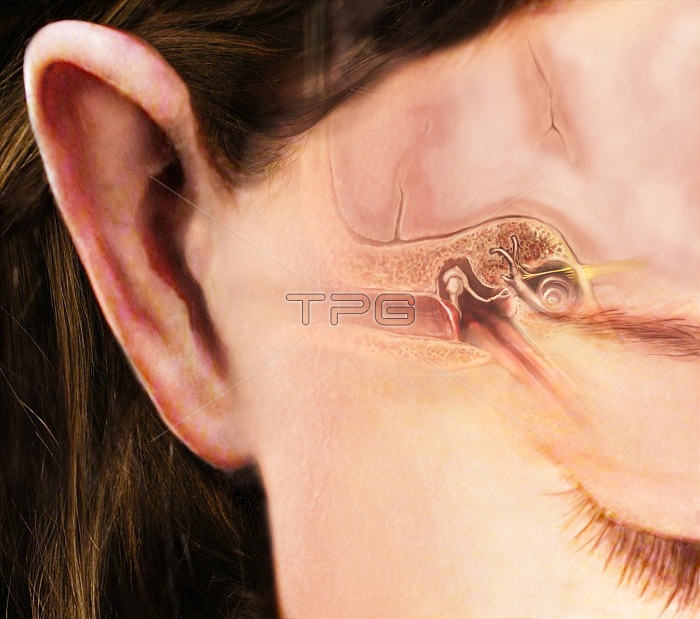
Inner structures of the ear reconstructed from scanned human data. Sound waves enter the ear through the external auditory meatus (ear canal) where they bounce against the thin tympanic membrane (eardrum). A vibration moves three very small bones (the ossicles) of the middle ear, which then pass on the vibration to a membrane at the entrance of the middle ear. When this membrane vibrates, it stimulates a pulsating wave through the fluid that fills the cochlea causing a current to pass over millions of small hairs called stereocilia. The stereocilia translate the mechanical movement into sensory impulses which are transmitted directly to the brain. The brain interprets the impulses as sound.
| px | px | dpi | = | cm | x | cm | = | MB |
Details
Creative#:
TOP22285581
Source:
達志影像
Authorization Type:
RM
Release Information:
須由TPG 完整授權
Model Release:
N/A
Property Release:
No
Right to Privacy:
No
Same folder images:

 Loading
Loading